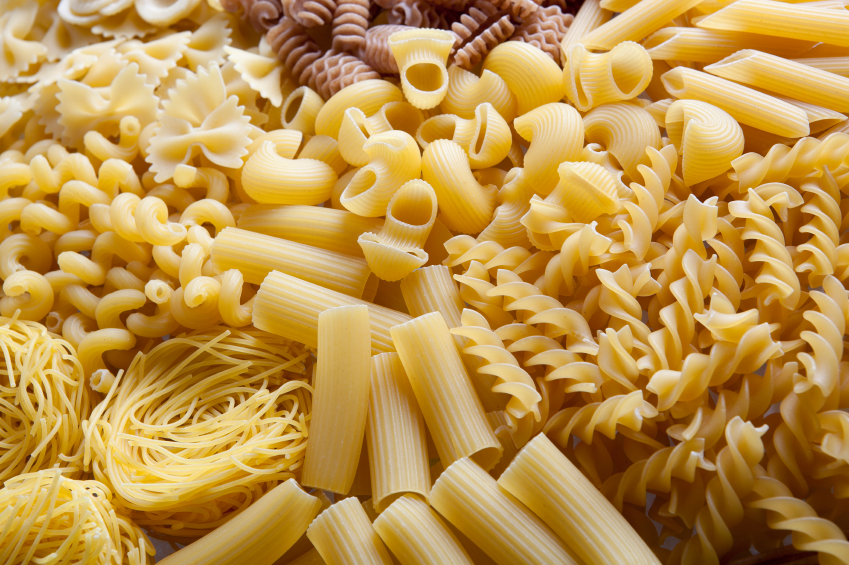Heres How to Lose Belly Fat
One thing that most men as well as women consider utterly unappealing when they look in a full-length mirror is their bellies.
Why, they ask themselves, can't I have a flat stomach or a set of "six pack abs" like other people? Why do I have to look like such a fat slob?
And so this flat-stomach ache leads to a vow to do something about it before they head for that beach vacation they're planning next summer. Meanwhile, they find solace in those merciful winter months, when sweatshirts and sweaters can hide those unsightly spare tires.
But losing that midriff mound is possible.
No, there is no mystical formula, no magic bullet, no special secret diet and not even a specific food that takes dead aim at that ugly belly fat.
But the good news is that belly fat usually is the first fat to go when you start to peel off those pounds. And if the lure of Waikiki Beach isn't enough to spur you into action, here is some news that might:
Recent research has associated abdominal fat with cardiovascular disease, diabetes and cancer.
But it is not the handfuls of fat that you can grab (isn't that an ugly feeling?) that pose the highest health risk; rather, it is the untouchable, deep layer of fat that produces hormones and other substances that can have serious consequences for your health. This fat lies next to and in between the organs in your abdominal cavity.
Here's a quick and easy check you can make if you want to know whether you might be at risk for type 2 diabetes:
Run a tape measure around your waist at the level of your belly button. A measurement greater than 35 inches in women and 40 inches in men is considered unhealthy.
And you shouldn't put too much trust in the body mass index (BMI) anymore. The BMI is a measurement of weight in relationship to height. Until recently it has been used as a key factor in determining whether a person is at risk for diabetes, heart disease and certain types of cancer. But researchers are now saying that this number may be inaccurate and therefore misleading.
The problem, researchers say, is that the BMI relies on total weight and does not factor in muscle mass or fat deposits.
And, because muscle is denser and weighs more than fat, two individuals who weigh the same and are the same height can have the same BMI, but one can have a considerably higher percentage of body fat.
Researchers now know that if most of your fat is in your abdominal area your health risks are greater than if it is in your hips, thighs or rear end. The problem is that belly fat is metabolically active and can increase the risk of colon cancer by raising certain hormones that affect cell growth.
Nowadays, scientists and doctors consider a waist-to-hip ratio, which is a measurement of waist size divided by hip size, to be a truer gauge of risk factors. A ratio above 0.85 for women and 0.90 for men is higher than average and typically indicates a greater risk.
So, the question now becomes, how do you get rid of this troublesome belly fat, whether it is the kind you hate to look at or the kind you can't even see?
Well, the primary way, as we alluded to earlier, is to begin to lose weight overall, because belly fat is one of the first fats to retreat for most people when it is confronted with a diet plan. Weight loss can be expressed with a fairly simple formula involving calories burned and calories taken in. All things being equal, when you:
** Take in more calories than you use up, you gain weight.
** Burn more calories than you bring in, you lose weight.
So if you are already burning more than you are eating, studies show that a diet with a higher ratio of monounsaturated fats, such as those in avocados, nuts, seeds and chocolate, can prevent the accumulation of body fat. But it is not likely that someone eating a high-calorie diet and eating these monounsaturated fats will lose belly fat. Those on a low calorie diet who are eating these types of foods, on the other hand, will not gain belly fat.
Then there are the trans fats, those destructive critters found in most margarines, crackers and cookies and a host of other processed food stuffs (read the labels!), also will result in the addition of more belly fat. That's not the only problems trans fats cause, but that's the subject for another article. The point is, trans fats should be on your no-no list.
(One final note about trans fats. Try this experiment: Take a tub of typical margarine loaded with trans fats and set it on your picnic table on a warm summer day. Check on it the next day. You won't find a single bug or flying insect in it or even near it. Not even the bugs will eat it! That's because it has no food value. It is a petroleum-based formulation of chemicals that you should avoid like the plague.)
Soluble fiber such as found in apples and oats, on the other hand, will help lower belly fat levels.
The manner in which fat is distributed over the human body often is not under our control. Sometimes the distribution is genetically programmed (blame your parents!), or a result of a life event such as menopause (blame Mother Nature!).
What is under our control, however, is the level of overall fat. And if we can manage to keep that amount of fat low, or at least reasonably low, it does not really matter all that much where it goes because there isn't much to begin with. Make sense?
A word about spot reduction: Unfortunately, it is not really possible, despite all the misleading and downright false ads that you see out there.
So even though some fad diets promise that if you eat a certain type of food every day you will lose the fat in your belly, this simply is just not the case.
What happens is that with a low-calorie diet you will lose fat in your abdomen faster than you do anywhere else. And by adding an exercise regimen to your diet plan, you will not only reduce belly fat, your muscle tone will improve, and those six-pack abs will begin to emerge.
-
Learn How you can Reduce Fat Fast, Without the need of Paying Excessive Expenses For Trainers or Dieticians
Have you been searching substantial and low for your authentic stra
-
Should I Use Lose Weight Supplements?
The holiday season has just ended and ma
-
Make A Preemptive Strike Against Christmas Weight Gain
The summer holiday season is over in the northern hemisphere; the
-
Exercises for a Flat Stomach for Men
Getting a six pack abdomen is the dream of most men, but how many can
-
7 Calorie Burning Tips
These are just a few habits you can embrace to start revving your
-
Your Body, Your Mediterranean Diet Plan
To be honest, we arent all that fond of regimented eating plans. Mainl
- DON'T MISS
- 4 Additional Steps of Healthy Weight Loss
- Ways To Lose Weight. 5 Easy Exercises To Burn Fat
- Can Drinking Ice water help Burn Calories?
- Avoid Weight Gain over the Weekend
- Need To Slim Down? These Tips Can Help
- Swimming For Weight Loss
- 6 Everyday Tips For Losing Weight
- Ideal Body Composition: What You Should Know
- Creating An Interval Training Workout
- Dieting Pitfalls Part 2 Stuck On Second Helpings




